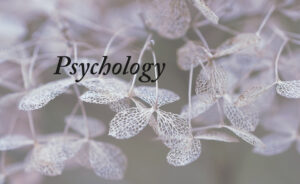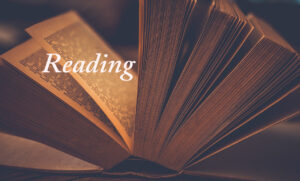The story of Durga is revealed in the Devi Mahatamya of Markandeya Purana as well as the Devi Bhagawat Purana. Traditionally associated with the Victory of Good over Evil, there are other important subtle elements of the story that are worth recounting. But first of all we must be clear as to what is Good and what is Evil.
Asura and chaos created:
Mahishasura is born, as most Asuras out of the union of Rambha and Mahishi, both words implying a buffalo. Just as cow is a symbol of light, the buffalo is the symbol of blind rage, extreme violence, almost invariably associated with a preponderance of obscure tamasic energies and the forces of lust and greed. Such forces, when they awaken in man or the society are dangerous to all that is good. They threaten the empire of the gods who try to fill the human consciousness with positive energies such as wisdom, compassion, kindness, strength, beauty. They disrupt harmony and create much disorder and confusion. Such is Mahishasura who is found wherever there is extreme uncontrolled anger and senseless violence, wherever there is excess of greed and lust, wherever the consciousness is dull and obscure, refusing to progress towards the light, and wherever there is lack of love and its space is occupied with the lust to possess and the gigantic ambition full of vain and boastful egoism make that covets all rather than give. This incidentally is the basic theme behind the birth of almost every Asura where lust, anger, greed, ambition take over and cloud the intelligence meant to help man progress towards higher and nobler things turning a man into an animal. Children of violence they create disruptionn and disorder wherever they go, plunder and loot, destroying all that is noble and beautiful and high that stands in their way. It is this mentality that destroyed such beautiful things in India under the guise of conquest. There is eventually a loss of godlike parts in such individuals and groups and the law of sacrifice that is the basis of creation is replaced by the law of acquisition by force. Instead of labouring steadily to acquire what one does not have the Asura tries to snatch it by violence and force. Its idea of justice is blind might because he values things, objects, people only for their outer value and not for their inner truth and what they truly represent. Beauty is, to the demonic nature not something to be worshipped and adorned but to be possessed and enjoyed. A woman is to them not a devi but an object of pleasure.
Such forces and beings who embody these energies, such ideologies that promote the Asuric way of life have always been there and it is these that continue to retard and deflect man’s straight path to progress.
The Birth of Durga:
But always there have been forces of Light, the godlike energies who draw their power from the gods and the gods themselves from the One Divine Mother. The birth of Durga is the joining of all these godlike powers in a harmonious form . It is a feminine form not only because Mahishasura had secured a boon that only a woman could kill him. It is also because the Feminine form has always been a symbol of Shakti, the One Power that distributes itself in the million beings and creatures in the creation. Durga therefore is the feminine since while the masculine can hold one or another power the feminine being the Shakti or, at another level Mahamaya and Prakriti has the capacity to hold within herself many powers and forces and energies and possibilities.
India’s answer to feminism:
To be as Durga we too must awaken in us the feminine and the wideness to contain the worlds and hold the diverse powers harmoniously within us. But most of us we need to harmonise within us Wisdom, Strength and the Beauty born of purity. In this conception a woman can be complete in herself but a man is incomplete until he has discovered and unveiled the Feminine, the Shakti within him. This is India’s answer to the problem of feminism, spiritual feminism if we like. Durga is the ultimate symbol of feminism. She does not need man since all the powers of the gods are hers. She does not depend upon a man to protect her, rather she is the Power that protects man and the gods. But to arrive at this acme of spiritual feminism, the woman must discover her own highest strength, the power within her rather than imitate men and compete with him or look upto him.
Different names of Durga:
This does not mean that Durga is just a symbol and nothing more. In fact all the gods and goddesses are eternal realities being powers and aspects of the One Supreme. They are real conscious beings that have been acknowledged in different cultures and under different names. We in India know her as Durga, there in Greece she is Pallas Athene. She is a combination of the powers of Maheswari and Mahakali represented by the symbols in her ten hands.
Symbolic Representation:
These of course are symbolically represented as follows.
Chakra is the dynamic Light that destroys darkness.
Conch is the power of Victory, the sound that fills the heart of the Asura with a foreboding of their end.
Bow and arrow is the power of will to bend time and circumstances by the focus of her energies.
Sword is the power of discernment, the power that reveals the true and the false in one glance.
Shield is the armour of faith in herself and her powers to conquer
Mace is the power that can crush a million obstacles on the way.
Thunderbolt is the powers of the highest Mind that cleaves through every layer of ignorance and darkness.
Trident is the power that comes through a mastery of the three gunas or modes of Nature through tapasya.
Lotus is the power of spiritual purity. It is also the symbol of her blessings that she confers upon her devotees and children.
Noose is the power that drags and pulls even the most blind Asura towards herself. It is She who first draws the Asura towards herself and then compels him to surrender or else she says him absorbing his being and energies into herself.
The lion itself is the power that rules over the animal world and the beastly subhuman energies that she has subdued and tamed.
The nine day battle:
What about the nine day long battle?
The nine day fight is a symbolic story of man’s quest for Perfection (Siddhi) as the divine element battles through the layers of ignorance and the forces of Darkness and Night. These are the nine stages of the soul’s inner journey as is evident from the names itself. Shailbala is the daughter of the mountains signifying the birth of the Divine Energy within matter. She is hidden in matter lying concealed at the base of the spine in man. When she awakens, then man begins to turn towards higher spiritual things. His quest begins with the awakening of this fire as the Vedic seers would say.
The next stage is Brahmacharini whence we have to tend and safeguard this newborn aspiration by becoming more and more one-pointed.
As a result the night of ignorance in which we dwell becomes lit up. This is the Chandraghanta.
The fire has to be further held within and further concentrated like a baby in the womb. This is Kushmanda, the cosmic egg.
The next step is the delivery of the psychic being or the secret soul in us. The Divine Power working in us delivers the soul out of the prison of the ego and is called Skandamata.
It is after this that man or a woman becomes a power of Durga, Katyayani to fight the cosmic battle against the demons and forces of Mahishasura.
Once the battle against the cosmic forces of darkness are accomplished, then the next step is surrender at the feet of the Divine Mother who takes away from us the entire burden of good and evil as Kalaratri.
It is then that we perceive her in Her true original form as MahaGauri, the effluent Mother giving birth to the gods in us.
Finally all these powers are taken up to their utmost possible individual perfection by the Grace of the Divine Mother as Siddhidhatri.
The final victory indeed takes long but the beauty of the story is that in the end Mahishasura realises his end is near. He then throws himself at the feet of the Divine Mother in complete surrender. The mood of the Divine Mother now changes into Compassion and she not only slays the outer form of Mahishasura but takes his inner being into hers and assures that he will be kept near her in all her worship. This image reveals that the highest aspect of Durga is indeed the power of Compassion rather than the power to slay. Her destruction is also a Grace and even her punishment is a blessing.
Such is the story of Durga. She is one of many aspects of the Divine Mother.
Sri Aurobindo on Durga:
Sri Aurobindo reveals in Savitri.
‘An image sat of the original Power
Wearing the mighty Mother’s form and face.
Armed, bearer of the weapon and the sign
Whose occult might no magic can imitate,
Manifold yet one she sat, a guardian force:
A saviour gesture stretched her lifted arm,
And symbol of some native cosmic strength,
A sacred beast lay prone below her feet,
A silent flame-eyed mass of living force.’
and….
‘But thought nor word can seize eternal Truth:
The whole world lives in a lonely ray of her sun.
In our thinking’s close and narrow lamp-lit house
The vanity of our shut mortal mind
Dreams that the chains of thought have made her ours;
But only we play with our own brilliant bonds;
Tying her down, it is ourselves we tie.
In our hypnosis by one luminous point
We see not what small figure of her we hold;
We feel not her inspiring boundlessness,
We share not her immortal liberty.
Thus is it even with the seer and sage;
For still the human limits the divine:
Out of our thoughts we must leap up to sight,
Breathe her divine illimitable air,
Her simple vast supremacy confess,
Dare to surrender to her absolute.
Then the Unmanifest reflects his form
In the still mind as in a living glass;
The timeless Ray descends into our hearts
And we are rapt into eternity.
For Truth is wider, greater than her forms.
A thousand icons they have made of her
And find her in the idols they adore;
But she remains herself and infinite.’
Affectionately,
Alok Da



